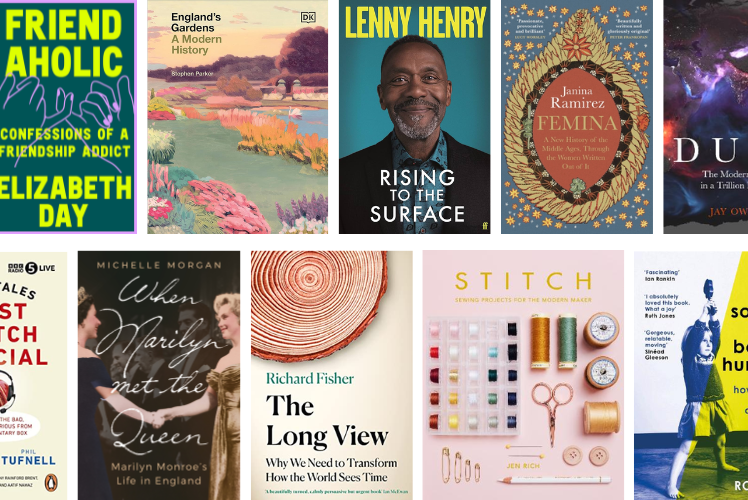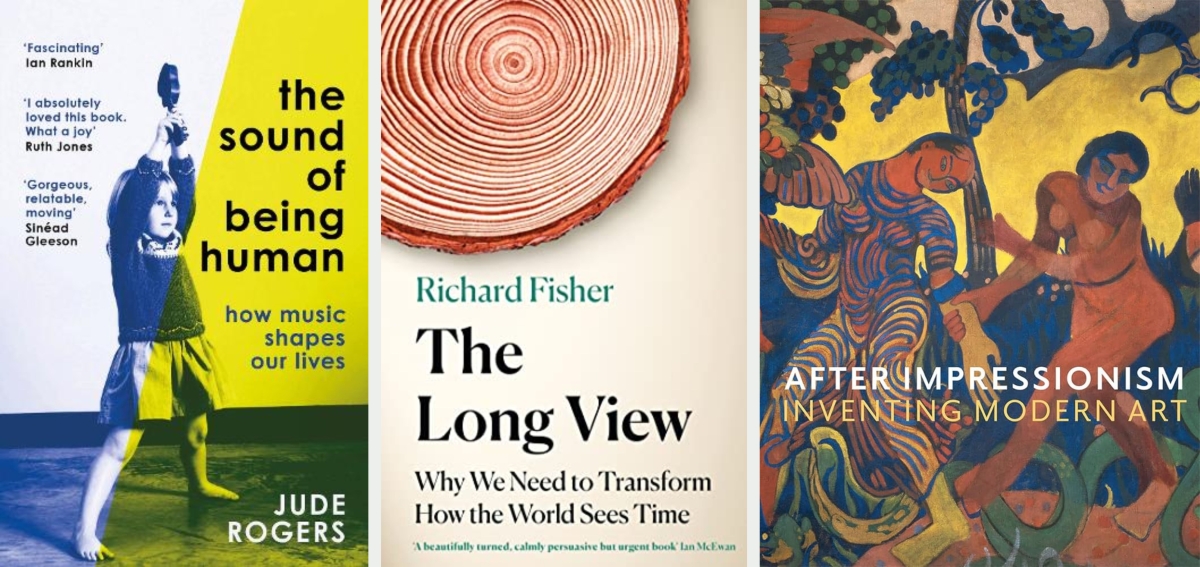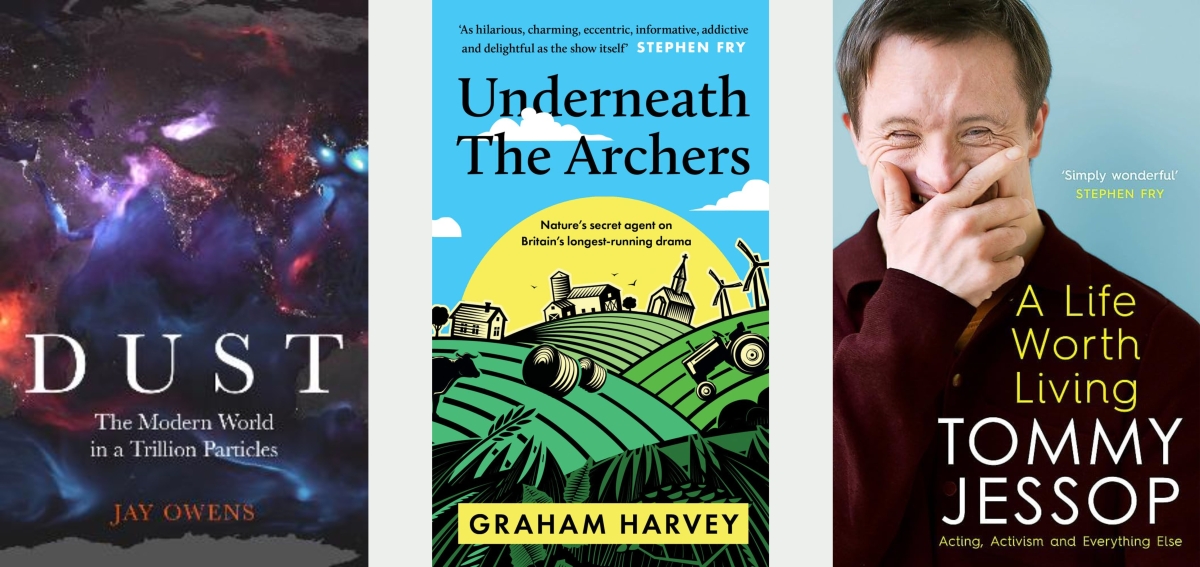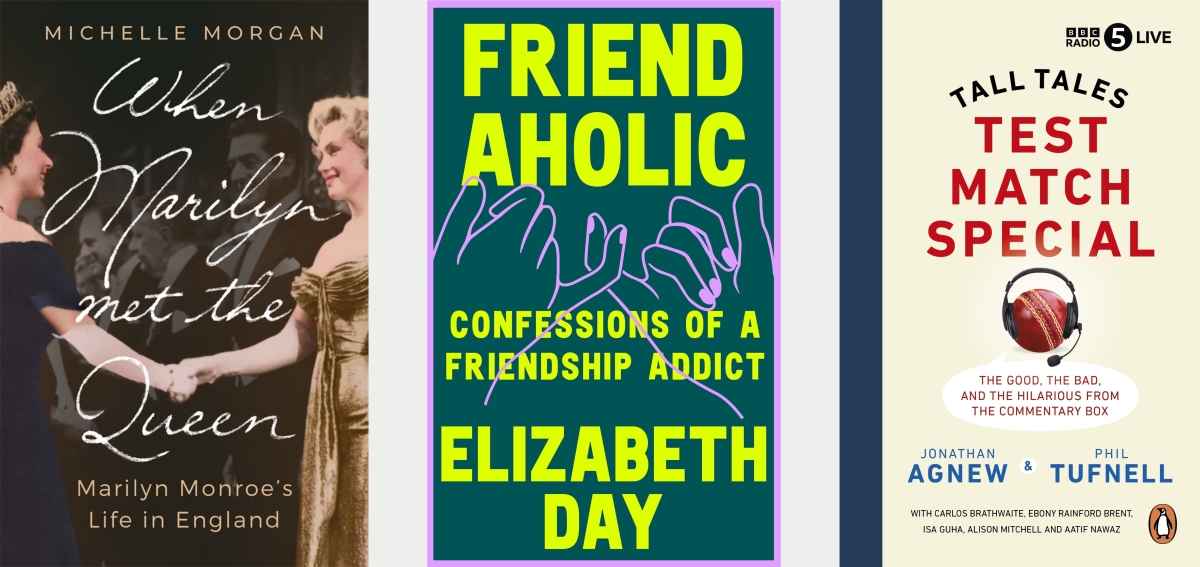
We’re always adding fresh non fiction to the shelves. From art and history, to craft and autobiography, there’s lots of ideas to explore. Whether you want to learn something new, discover new places or people, or just want something different to read, why not give these titles a go. Click the links to reserve today!
-------------------------------------
1. Friendaholic: Confessions of a Friendship Addict / Elizabeth Day
Growing up, Elizabeth wanted to make everyone like her. Lacking friends at school, she grew up to believe that quantity equalled quality. Having lots of friends meant you were loved, popular and safe. She was determined to become a Good Friend. And, in many ways, she did. But in adulthood she slowly realised that it was often to the detriment of her own boundaries and mental health.
Then, when a global pandemic hit in 2020, she was one of thousands of people forced to reassess what friendship really meant to them - with the crisis came a dawning realisation: her truest friends were not the ones she had been spending most time with. Why was this? Could she rebalance it? Was there such thing as...too many friends? And was she the friend she thought she was?
In Friendaholic, Elizabeth unpacks the significance and evolution of friendship. From exploring her own personal friendships and the distinct importance of each of them in her life, to the unique and powerful insights of others across the globe, Elizabeth asks why there isn't a language that can express its crucial influence on our world.
2. England's Gardens: A Modern History / Stephen Parker
A fresh take on a much-loved subject, this book will help you get to know England's gardens up close and personal. Garden historian Stephen Parker leads you through England's horticultural history, unearthing the cultural context and hidden stories behind the gardens, and bringing lesser-known garden makers to the fore. In five detailed historical chapters, Parker explores the making of the so-called "English" garden - from its origins in the formal splendour of stately homes, all the way to climate-change resilience and future-facing designs of the modern era.
3. The Long View: Why We Need to Transform How the World Sees Time / Richard Fisher
Humans are unique in our ability to understand time, able to comprehend the past and future like no other species. Yet modern-day technology and capitalism have supercharged our short-termist tendencies and trapped us in the present, at the mercy of reactive politics, quarterly business targets and 24-hour news cycles.
It wasn't always so. In medieval times, craftsmen worked on cathedrals that would be unfinished in their lifetime. Indigenous leaders fostered intergenerational reciprocity. And in the early twentieth century, writers dreamed of worlds thousands of years hence. Now, as we face long-term challenges on an unprecedented scale, how do we recapture that far-sighted vision?
4. The Sound of Being Human: How Music Shapes Our Lives / Jude Rogers
The Sound of Being Human explores, in detail, why music plays such a deep-rooted role in so many lives, from before we are born to our last days. At its heart is Jude's own story: how songs helped her wrestle with the grief of losing her father at age five; concoct her own sense of self as a lonely adolescent; sky-rocket her relationships, both real and imagined, in the flushes of early womanhood, propel her own journey into working life, adulthood and parenthood, and look to the future.
Shaped around twelve songs, ranging from ABBA's 'Super Trouper' to Neneh Cherry's 'Buffalo Stance', Kraftwerk's 'Radioactivity' to Martha Reeves and the Vandellas' 'Heat Wave', the book combines memoir and historical, scientific and cultural enquiry to show how music can shape different versions of ourselves; how we rely upon music for comfort, for epiphanies, and for sexual and physical connection; how we grow with songs, and songs grow inside us, helping us come to terms with grief, getting older and powerful memories. It is about music's power to help us tell our own stories, whatever they are, and make them sing.

5. Stitch: Sewing Projects for the Modern Maker/ Jen Rich
The book will cover the basic techniques of sewing with all projects achievable either by using a sewing machine or by hand (and a little more time!), and with no overly complicated techniques. Each project will be photographed and some will be accompanied by step-by-step images to help guide you through more intricate instructions.
With makes including reusable fabric bowl covers, pretty pot holders and scrunchies made from off cuts, as well as projects to up-cycle old bed linen or use up scraps of fabric left from other designs in the book, anyone from beginner to intermediate will find projects to love in this modern makers handbook.
6. When Marilyn Met the Queen: Marilyn Monroe's Life in England / Michelle Morgan
In July 1956, Marilyn Monroe arrived in London, on honeymoon with her husband Arthur Miller, to make The Sleeping Prince (later released as The Prince and the Showgirl) with Laurence Olivier. When the couple arrived at London Airport, they were looking forward to a peaceful stay. Marilyn would work during the day at Pinewood Studios, while Arthur would write. Then, in the evening, the couple would be able to relax together in their private English country cottage. It didn't quite turn out that way.
Marilyn found herself torn between settling into married life, being a curiosity for the frequently hostile British press, and her work on The Prince and the Showgirl. She took solace in small acts of kindness from members of the public, and a new fascination with Queen Elizabeth.
Michelle Morgan describes Marilyn's trip to late-1950s' Britain in evocative detail, exploring the making of the film alongside the film star's troubled private life and her quest to meet the Queen.
7. Introduction to Graphic Design: A Guide to Thinking, Process & Style / Aaris Sherin
From your first day learning the basic terms of design, through to bringing together your final portfolio, Introduction to Graphic Design 2nd edition is the perfect companion for your learning journey.
Written by experienced educator and designer Aaris Sherin, this popular textbook is designed for visual learners and explains all the key topics introductory graphic design classes will contain. Concepts covered include layout, narrative, semiotics, colour, typography, production and context, and examples range from packaging design and advertising, through to apps and motion graphics.
8. After Impressionism: Inventing Modern Art / MaryAnne Stevens
Through the 1880s the very essence of representation, meaning and process in Western art were profoundly interrogated. Plausible representations of the external world were cast aside in favour of non-naturalism expressed in varying degrees, from modest distortions of reality to pure abstraction.
The decades that followed, up to the outbreak of the First World War in 1914, were a complex, vibrant period of artistic questioning, searching, risk-taking and innovation. Concentrating on this period of great upheaval, this book will explore the constructive dialogue between painting and sculpture, and the influential roles played by three giants of the era, Paul Cézanne, Paul Gauguin and Vincent van Gogh, across European art as a whole. While acknowledging the centrality of Paris as a cultural capital, it will also uniquely highlight other centres of artistic ferment in Europe, from Brussels and Barcelona to Berlin and Vienna, and track the variety of routes into modernism in the early twentieth century.
This fully illustrated catalogue will contain four essays, introductions to each city of ferment and biographies of the artists.
9. Femina: A New History of the Middle Ages, Through the Women Written out of It / Janina Ramirez
Extraordinary women have held positions of power throughout history. But, aside from the select few, why do we not hear about them?
The middle ages are seen as a bloodthirsty time of Vikings, Saints and Kings: a patriarchal society that oppressed and excluded women. But by digging a little deeper into the truth, drawing on evidence from all disciplines, we can see that the 'dark' ages were anything but. BBC historian Janina Ramirez has uncovered countless influential women's names struck out of historical records, with the word 'Femina' annotated beside them. Male gatekeepers of the past ordered books to be burnt, artworks to be destroyed, and new versions of myths, legends and historical documents to be produced, which has manipulated our view of history.
By weaving a vivid and evocative picture of the lives of the women who influenced their society, we discover not just why these remarkable individuals were removed from our collective memories, but also how many other misconceptions underpin our historical narratives, altering the course of history, upholding the oppressive masculine structures of their present, and affecting our contemporary view of the past.
10. A Life Worth Living: Acting, Activism & Everything Else / Tommy Jessop
Tommy Jessop is a multi-award winning actor, theatre performer, and campaigner. Tommy has been at the vanguard of bringing awareness of the potential of people living with Down syndrome to the media, and to government. A Life Worth Living will be Tommy's story - from his journey into acting and campaigning while showing his unstoppable determination, charisma, and love for life.
Tommy's natural instinct to help others leaps out from the pages, as does his wish to make people aware that those with learning disabilities just want to be treated like everybody else.

11. Test Match Special: Tall Tales - The Good, The Bad and The Hilarious from the Commentary Box / Jonathan Agnew & Phil Tufnell
Who played the best pranks on his fellow team-mates? Which member of the TMS team terrorised his teachers in the annual staff-pupil game? And the truth behind 'the greatest sporting commentary of all time'...
Between them, Jonathan Agnew and Phil Tufnell have probably watched more cricket than anyone alive, and they have many stories to tell, both as players and as commentators for Test Match Special. From their days as schoolboy cricketers, learning the ropes, to the shenanigans of the county circuit, and now their careers as commentators, they have seen it all.
12. Rising to the Surface / Lenny Henry
'Rising to the Surface' traces Lenny Henry's career through the 80s and 90s. The 16-year-old who won a talent competition, now has to navigate his way through the seas of professional comedy, learning his craft through sheer graft and hard work. We follow Lenny through a period of great creativity - prize-winning tv programs, summer seasons across Britain, the starring role in a Hollywood film, stand-up gigs in New York and a gala wedding to Dawn French. But with each rise there is a fall, the most traumatic being the death of his mother. But by the end of the book he has been able to rise through a sea of troubles and breaks out to the surface to accept the Golden Rose of Montreaux for his work in television.
13. Dust: The Modern World in a Trillion Particles / Jay Owens
Dust: The Modern World in a Trillion Particles tells the gripping story of how the relentless drive for profit and power has turned the world to powder. Combining history and science, travel and nature writing, Owens shows how the modern world was made through environmental devastation - and then brushed the consequences under the carpet. From particle air pollution and nuclear fallout to desertification, dried-up seas and melting glaciers, we've profoundly altered the planet we live on. The cost to human health - and to the natural world - proves immense.
From the California desert and the Dust Bowl in Oklahoma to the desiccated remains of the Aral Sea and the edge of the Greenland ice sheet, we are shown that some of the planet's most remote and forgotten places are central to the modern world. With clarity and insight, Dust: The Modern World in a Trillion Particles helps us understand our legacy and discovers the big ideas found within the smallest particles.
14. Lady Caroline Lamb: A Free Spirit / Antonia Fraser
From the outset, Caroline Lamb had a rebellious nature. From childhood she grew increasingly troublesome, experimenting with sedatives like laudanum, and she had a special governess to control her. She also had a merciless wit and talent for mimicry. She spoke French and German fluently, knew Greek and Latin, and sketched impressive portraits. As the niece of Georgiana, Duchess of Devonshire, she was already well connected, and her courtly skills resulted in her marriage to the Hon. William Lamb (later Lord Melbourne) at the age on nineteen. For a few years they enjoyed a happy marriage, despite Lamb's siblings and mother-in-law detesting her and referring to her as 'the little beast'.
In 1812 Caroline embarked on a well-publicised affair with the poet Lord Byron - he was 24, she 26. Her phrase 'mad, bad and dangerous to know' became his lasting epitaph. When he broke things off, Caroline made increasingly public attempts to reunite. Her obsession came to define much of her later life, as well as influencing her own writing - most notably the Gothic novel Glenarvon - and Byron's.
Antonia Fraser's vividly compelling biography animates the life of 'a free spirit' who was far more than mad, bad and dangerous to know.
15. Underneath the Archers: Nature’s Secret Agent on Britain’s Longest-Running Drama / Graham Harvey
ch-loved radio drama The Archers has been at the heart of British life for over seventy years, and the momentous events and changes of this time have all found a place in Ambridge. For more than three decades, scriptwriter Graham Harvey was the man behind the show’s farming storylines, writing over 600 episodes and crafting some of its most memorable moments: the Great Flood, the trashing of Brian’s GM crop, the loss of the Grundy family farm.
In this book Graham interweaves personal memories of these moments with extracts from the scripts he created, offering behind-the-scenes details of how key characters and plotlines were developed, keeping pace with the real changes taking place in village and farm life. He also explores the part the show played in setting Britain on its disastrous transition from small-scale, sustainable farming to industrial agriculture. Could it now help guide the nation back to the nature-friendly, planet-saving methods we so desperately need?
16. Kneelers: The Unsung Folk Art of England and Wales / Elizabeth Bingham
Kneelers is a celebration of the most widely practised - but often overlooked - folk art in England and Wales over the past ninety years: the design and craft of church kneelers. Featuring charming stories and enchanting designs from churches across the country, the book traces the history of kneelers; from their spectacular beginnings at Winchester in the 1930s to their booming popularity after Queen Elizabeth II's coronation and the present-day congregations who are keeping the tradition alive.
In their range and diversity, the kneelers collected here form a fascinating social record of the concerns and interests that occupied their makers - including local fauna and flora, cricket, dragons, post-war tributes and the thrills of high-speed travel.
Filled to the brim with beautiful full-colour images, Kneelers displays the quirky artistry and widely varied (and often surprising) motifs which have characterised church kneelers in the twentieth century. It rejoices in the personal stories of some of the people who have practised and advanced the art form, and is a wonderful commemoration of what happens when communities come together to celebrate their history and their environment.

